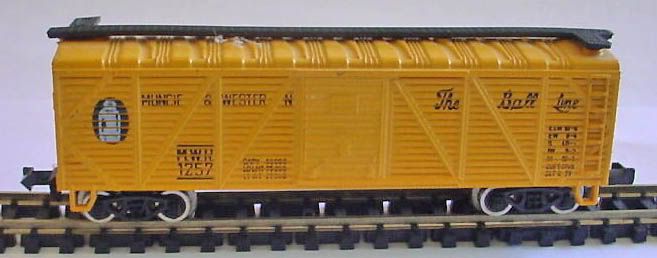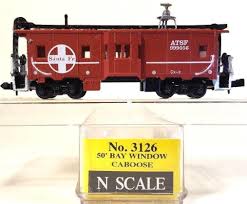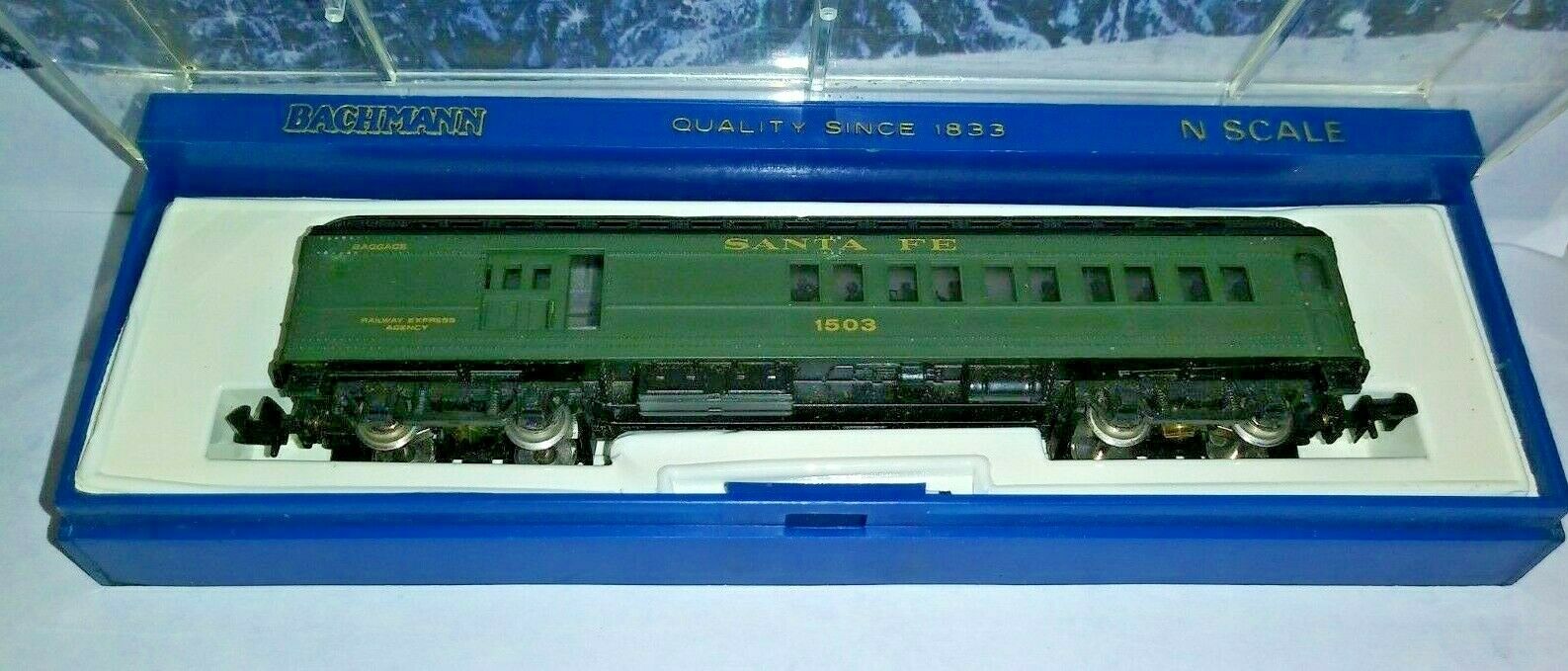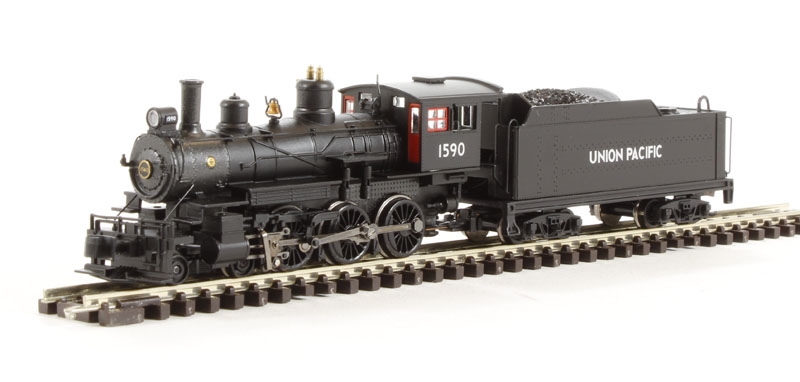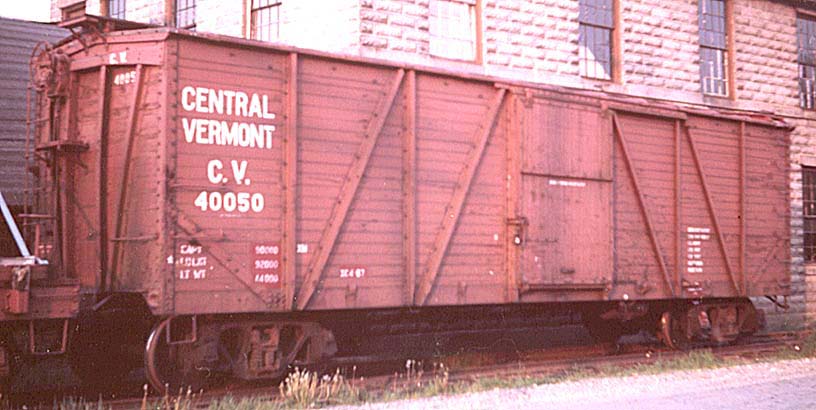Model Information: Bachmann introduced this model in 1972 six road names at $1.50 each. They originally came with Rapido couplers and nickel-silver plated deep-flange wheels.
Prototype History: The outside braced single sheathed box car proved to be a significant development in railway freight car technology in North America. Thousands of them saw use on North American railways beginning in the late 19th century through the 1960s. They carried bulk products such as grain and coal. They also carried packaged or bagged lading referred to as clean lading. While most of the outside braced cars were built for general service, some were built specifically to carry machinery and automobiles. For forty years freight trains on the prairies and indeed all across the country consisted of long lines of outside braced boxcars. They could commonly be found at elevators and loading platforms in communities small and large. They dominated railway yard scenes well into the 1940s.
The use of steel for the under frame (center and side sills), side and end frames initiated a new form of railway freight car building technology. Steel center sills and other under sill framing gave the cars the strength necessary to withstand the stress of longer and faster trains as well as the considerable stress involved in the contact necessary to activate closure of the knuckle coupler while being made up into trains in rail yards or from being picked up from local sidings along the line. The steel frame and the single wood side sheath minimized the weight of the car. This type of car design led to easy construction and repair. Its initial construction cost was low. The design provided secure joints between sides, ends and floors which prevented grain leakage.
The use of steel for the under frame (center and side sills), side and end frames initiated a new form of railway freight car building technology. Steel center sills and other under sill framing gave the cars the strength necessary to withstand the stress of longer and faster trains as well as the considerable stress involved in the contact necessary to activate closure of the knuckle coupler while being made up into trains in rail yards or from being picked up from local sidings along the line. The steel frame and the single wood side sheath minimized the weight of the car. This type of car design led to easy construction and repair. Its initial construction cost was low. The design provided secure joints between sides, ends and floors which prevented grain leakage.
Road Name History: 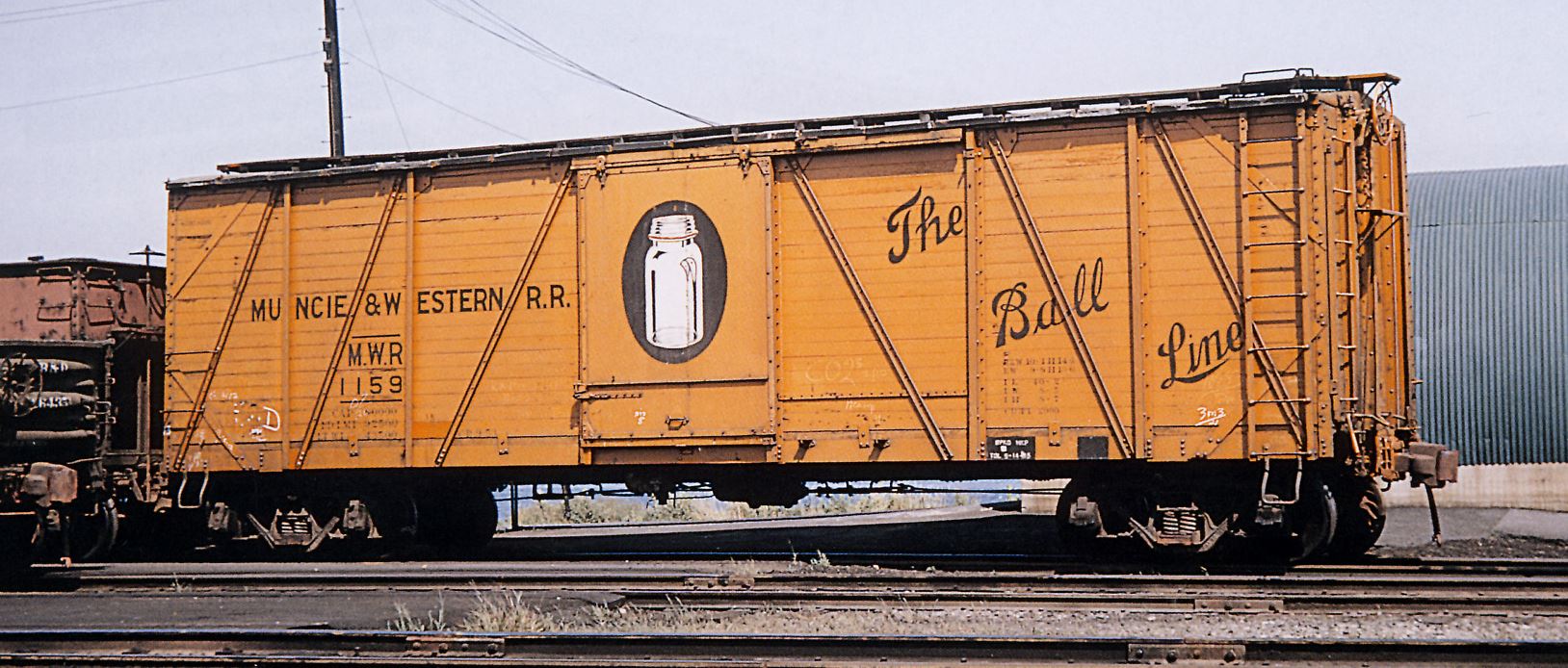 The railroad of Muncie and Western Railroad Company, was incorporated in Indiana, on May 12, 1902. It was a single-track, standard-gauge, steam railroad, located in the city of Muncie, Ind. It is the shortest railroad in the USA.
The railroad of Muncie and Western Railroad Company, was incorporated in Indiana, on May 12, 1902. It was a single-track, standard-gauge, steam railroad, located in the city of Muncie, Ind. It is the shortest railroad in the USA.
Nicknamed the “Ball Line” but legally incorporated as the Muncie and Western Railroad, the railroad was operated in the confines of the Ball Corporation’s plant on Muncie’s south side. It was busiest in the days when boxes of Ball glass (Mason) jars home-canned foods filled the family pantry.
The property consists of a belt railroad connecting various railroads with the industries of Muncie. The owned main line is 0.749 of a mile in length. The carrier also owns yard and side tracks totaling 3.181 miles. Its road thus embraces 3.930 miles of all tracks owned.

Nicknamed the “Ball Line” but legally incorporated as the Muncie and Western Railroad, the railroad was operated in the confines of the Ball Corporation’s plant on Muncie’s south side. It was busiest in the days when boxes of Ball glass (Mason) jars home-canned foods filled the family pantry.
The property consists of a belt railroad connecting various railroads with the industries of Muncie. The owned main line is 0.749 of a mile in length. The carrier also owns yard and side tracks totaling 3.181 miles. Its road thus embraces 3.930 miles of all tracks owned.
Brand/Importer Information: Bachmann Industries (Bachmann Brothers, Inc.) is a Bermuda registered Chinese owned company, globally headquartered in Hong Kong; specializing in model railroading.
Founded in Philadelphia, Pennsylvania, the home of its North American headquarters, Bachmann is today part of the Kader group, who model products are made at a Chinese Government joint-venture plant in Dongguan, China. Bachmann's brand is the largest seller, in terms of volume, of model trains in the world. Bachmann primarily specializes in entry level train sets, and premium offerings in many scales. The Spectrum line is the high quality, model railroad product line, offered in N, HO, Large Scale, On30, and Williams O gauge all aimed for the hobbyist market. Bachmann is the producer of the famous railroad village product line known as "Plasticville." The turnover for Bachmann model trains for the year ended 31 December 2006 was approximately $46.87 million, a slight increase of 3.36% as compared to 2005.
Founded in Philadelphia, Pennsylvania, the home of its North American headquarters, Bachmann is today part of the Kader group, who model products are made at a Chinese Government joint-venture plant in Dongguan, China. Bachmann's brand is the largest seller, in terms of volume, of model trains in the world. Bachmann primarily specializes in entry level train sets, and premium offerings in many scales. The Spectrum line is the high quality, model railroad product line, offered in N, HO, Large Scale, On30, and Williams O gauge all aimed for the hobbyist market. Bachmann is the producer of the famous railroad village product line known as "Plasticville." The turnover for Bachmann model trains for the year ended 31 December 2006 was approximately $46.87 million, a slight increase of 3.36% as compared to 2005.
Item created by: gdm on 2017-02-15 12:10:17. Last edited by gdm on 2017-02-15 12:17:53
If you see errors or missing data in this entry, please feel free to log in and edit it. Anyone with a Gmail account can log in instantly.
If you see errors or missing data in this entry, please feel free to log in and edit it. Anyone with a Gmail account can log in instantly.


